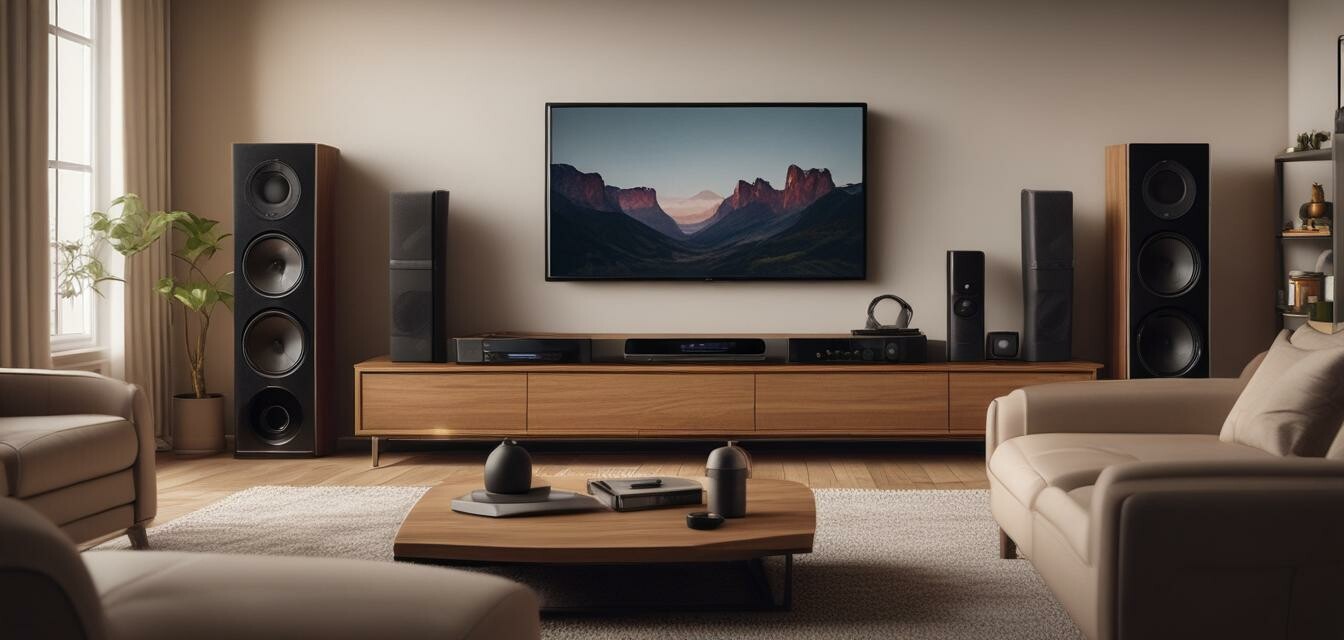
How to Optimize Sound Quality in Your Home Setup
Key Takeaways
- Understanding audio components is essential for better sound quality.
- Room acoustics play a significant role in sound performance.
- Proper placement of speakers can enhance audio immersion.
- Investing in quality cables and equipment is beneficial.
- Utilizing acoustic treatments can minimize unwanted noise.
Setting up a home entertainment system can be exciting yet challenging, especially when it comes to achieving optimal sound quality. Whether you're an audiophile or just a casual listener, understanding how to enhance the sound in your space will greatly improve your audio experience. In this article, we will explore several techniques to optimize sound quality in your home setup.
Understanding Audio Components
Before diving into the specifics of sound optimization, it's crucial to understand the key components of an audio setup:
| Component | Description |
|---|---|
| Audio Source | The device that plays music or audio (e.g., CD player, streaming service, etc.). |
| Amplifier | This boosts the audio signal to drive the speakers. |
| Speakers | Converts the audio signal into sound waves. |
| Wires and Cables | Connects all components. The quality of these can impact performance. |
Key Factors in Sound Quality Optimization
Room Acoustics
The first aspect to consider is room acoustics. The characteristics of your room affect sound quality due to reflections, absorption, and diffusion.
- Soft furnishings like curtains and carpets can absorb sound.
- Hard surfaces such as tiles can cause echoes and reverberations.
- Determining the best layout for speakers is essential for balance.
Speaker Placement
Correct speaker placement is pivotal in optimizing your sound setup. Here are some placement guidelines:
- Keep speakers at ear level while seated.
- Place them at least a few feet away from walls to minimize reflections.
- Form an equilateral triangle with the listening position to enhance audio immersion.
Wiring and Connections
The cables you use can also influence sound quality. Investing in high-quality cables can help reduce signal loss and interference. Consider using:
- High-quality speaker wires for reliable connectivity.
- Optical or HDMI cables for digital audio transfer.
- Interconnects with proper shielding to prevent noise from external sources.
Expert Tips for Enhancing Sound Quality
Beginner's Section
- Start with a basic setup and gradually upgrade components based on your need.
- Regularly check connections to ensure they are snug and secure.
- Experiment with speaker placement by moving them slightly to see what sounds best.
Acoustic Treatments
Adding acoustic treatments can significantly improve your home's sound quality. Consider these options:
- Acoustic panels to absorb sound reflections.
- Bass traps to manage low-frequency sounds.
- Diffusers to evenly distribute sound across the room.
Featured Product
TOPTRO TR27 Mini Projector
Enjoy stunning visuals with DOCS projector featuring 4K support and incredible sound quality—your gateway to home cinema.
Learn MoreConclusion
By following these simple yet effective methods, you can dramatically improve the sound quality of your home setup. Remember to consider room acoustics, speaker placement, cabling, and possible acoustic treatments. With some experimentation and dedication, you'll enjoy a fantastic auditory experience that enhances your movies, music, and gaming.
Pros
- Improved sound quality enhances your audio experience.
- Simple adjustments can lead to significant improvements.
- Creates an immersive environment for entertainment.
Cons
- Acoustic treatments can take time to find the right setup.
- Quality cables and equipment can be costly.
Explore More Resources
For additional information on optimizing your home setup and understanding various electronics, check out our other resources:

